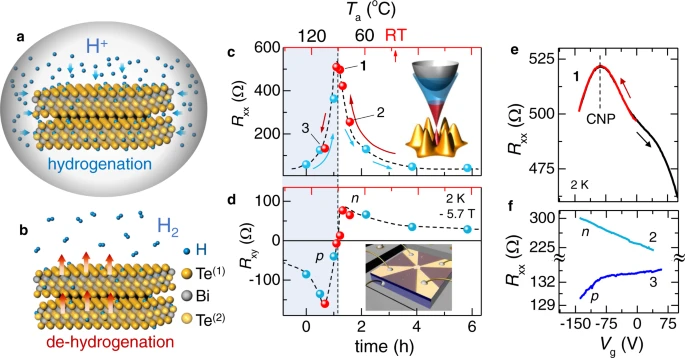Phys.org May 4, 2022
An international team of researchers (USA – City College of New York, Virginia Tech, Oak Ridge National Laboratory, City University of New York, Poland) invented a new facile and powerful technique that uses ionic hydrogen to reduce charge carrier density in the bulk of 3D topological insulators and magnets. It made robust non-dissipative surface or edge quantum conduction channels accessible for manipulation and control. Hydrogen-tuning technique of chalcogen-based topological materials and nanostructures uses insertion and extraction of ionic hydrogen from dilute aqueous hydrochloric acid solution, which leaves the layered topological crystal structure as well as electronic bands intact and has an extra benefit of removing native surface oxide while passivating surfaces. The process is fully reversible, as hydrogen-chalcogen moiety can be disassociated by a low-temperature annealing protocol and multiply-cyclable and reproducible, thereby resolving one of the key limitations of magnetic and nonmagnetic topological insulator. The work could open a breadth of new quantum device platforms for harnessing emergent topological states for nano-spintronics and fault-tolerant quantum computing…read more. Open Access TECHNICAL ARTICLE

Tuning bulk conductivity of a topological material by hydrogenation. Credit: Nature Communications volume 13, Article number: 2308 (2022)